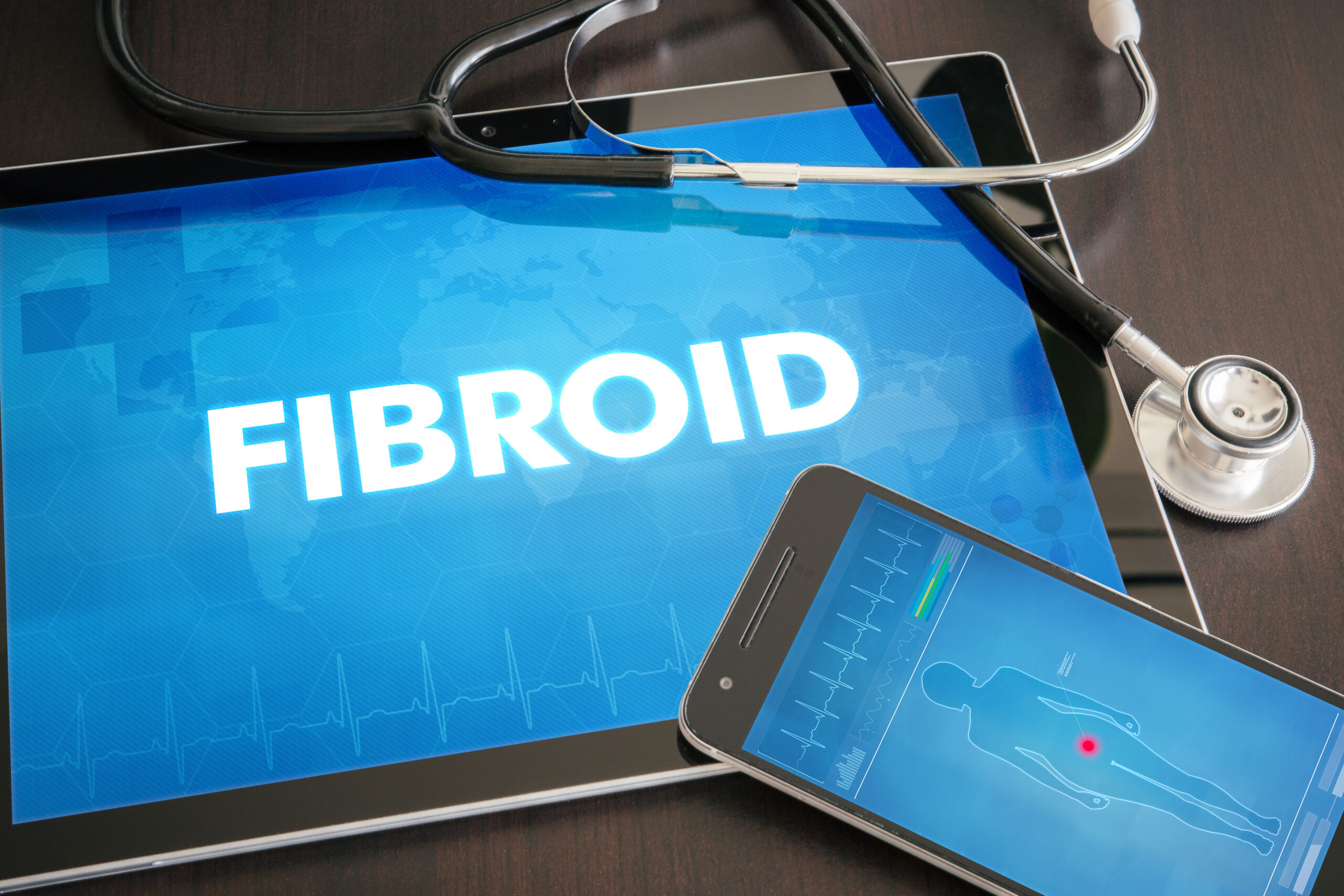Table of Contents
Uterine fibroids are more common than you think and often go undiagnosed. Those who experience symptoms could need everything from an over-the-counter pain medication to a hysterectomy to remove the uterus completely. Everyone’s experience is unique. Let’s look at what fibroids are, the various types, risk factors, and more. Then, we’ll discuss treatment options and how you can work with your healthcare providers on a treatment plan that works best for you.
The Statistics
A 2018 study published in the American Journal of Obstetrics and Gynecology found that nearly 10% of women seen at Kaiser Permanente Washington in 2014 were diagnosed with uterine fibroids. Women age 50-54 had higher risk with nearly 16% diagnosed. However, Black women were most susceptible with over 18% of the diagnoses among all ethnic groups.
It’s important to note that many cases are asymptomatic and go undiagnosed. Researchers estimate that up to 80% could develop fibroids by age 50 and African Americans are up to three times more likely to develop them than White people. In addition, they are seven times more likely to require surgery to treat them.
What Are Uterine Fibroids?

Fibroids grow in various locations on, in, or around the uterus. This includes the wall of the uterus, the uterine lining, near the fallopian tubes, or nearby internal organs. Some locations are more common than others.
Types of Fibroids:
- Intramural fibroids develop inside the muscular wall of the uterus and are often the most difficult to treat.
- Submucosal fibroids grow in the uterine cavity.
- Subserosal fibroids develop close to the muscular wall on the outside of the uterus.
- Pedunculated fibroids develop on the outside of the uterus but not as closely as the subserosal fibroids. They connect with a stem and sit farther away. This is the least common type of uterine fibroid.
Symptoms of Uterine Fibroids
Fibroids are quite common, but most women aren’t aware they have them. Those with symptoms could experience a wide range of things depending on how many there are, where they are located, and their size. While very heavy bleeding and pelvic pain are the most common signs of fibroids, every person’s experience will be unique, which is why personalized attention from a knowledgeable provider is essential.
Possible Signs of Uterine Fibroids:
Possible Complications
With very heavy menstrual bleeding or bleeding between periods comes the risk for anemia, a condition in which your body does not have enough healthy red blood cells. Symptoms of anemia include lethargy, dizziness, and shortness of breath. Close management by a physician is necessary if fibroids cause anemia to become life-threatening.
Some fibroids may twist at the stem and cause severe pain and symptoms that mimic illness. They may also grow quickly, requiring surgical intervention if medication does not slow their growth. If fibroid tumors begin to break down, the body may react with fever or nausea. Treating the fibroids can often resolve infertility, which is one of the more common complications of uterine fibroids.
Fibroids Causes and Risk Factors

It’s still unknown what causes uterine fibroids, but research suggests that there are several risk factors for them. One of the biggest risk factors is hormones. Those who take hormones or who have natural hormone imbalances seem to be at higher risk of developing fibroids. This is only one of many contributors, however, and those at risk of developing fibroids should discuss their concerns with their healthcare provider.
Risk Factors for Uterine Fibroids:
Diagnosing Fibroids
Because many uterine fibroids are first detected through a routine pelvic exam, it may be difficult to detect them in very heavy women. However, if your provider suspects them or notices changes in the size or shape of your uterus, they may order additional diagnostic tests to determine their presence, size, and location.
Diagnostic Tests for Uterine Fibroids:
- Ultrasound: An ultrasound probe uses sound waves to view internal organs. Your provider may order a sonohysterography test in which they inject saline into the uterus during an ultrasound so that it is easier to see the uterine cavity.
- MRI: Magnetic resonance imaging, or MRI, can be much more effective at visualizing uterine fibroids once they’ve been detected with ultrasound.
- Hysteroscopy: A lighted scope is used to view this inside of the uterus. This is a minimally invasive procedure done in the clinic.
- Endometrial Biopsy: While nearly all fibroids are benign (non-cancerous), your provider may suggest a biopsy to confirm it with a diagnostic fibroid biopsy.
Treatment Options for Uterine Fibroids

There are many treatments available for uterine fibroids, including things you can do at home to complement your doctor’s care, making it more effective, to medications and even surgery to help manage your symptoms depending on severity. Because there are so many options, it’s important to discuss them with your health care provider so you can make the most informed and best choice for your care.
Best Home Care
Many home remedies are simple and you may already do them, such as a heating pad and over-the-counter pain relievers. However, there is more you can do to help manage your pain without or in addition to the help of your medical provider.
Diet
A mostly vegetarian diet may help those with uterine fibroids, although cold-water fish like salmon and tuna that are high in omega-3 fatty acids are beneficial. You may choose to supplement your diet with fish oil. Many women with fibroids find that avoiding high-calorie foods can help reduce symptoms as well, instead choosing green vegetables, apples, and citrus fruits that all contain high levels of flavonoids. You may decide to work with a dietician or nutritionist if you are overweight, as weight management is a large part of managing symptomatic uterine fibroids.
Stress
There are many ways stress levels affect the female reproductive system and this is especially true for those with fibroids. One study by the Department of Epidemiology, Gillings School of Global Public Health at the University of North Carolina Chapel Hill found that significant and stressful life events seemed to be a contributing factor in the presence and growth of uterine fibroids. To help control stress, you may choose to work with a therapist, get regular massage, exercise regularly, or meditate. Certain types of yoga can both manage stress and offer exercise benefits to help manage weight loss.
Available Medications
Taking over-the-counter pain relievers may help reduce the pain and control heavy bleeding because they also act as anti-inflammatories. However, they won’t treat fibroids long term because they don’t shrink them. Birth control pills or an intrauterine device (IUD) may work the same way. However, medications that regulate hormones could help shrink fibroids over time so long as you continue taking the medication. Your physician may recommend medication as one of the first treatment options.
Non- or Minimally Invasive Procedures
Some procedures are minimally invasive, or not invasive at all, and would be the next step in treating fibroids. These procedures are often very effective at treating fibroids that haven’t responded as well to medication alone or your doctor feels your fibroids need more aggressive therapy to control your symptoms.
- Forced Ultrasound Surgery: A specialized MRI machine targets high-energy, high frequency sound waves at each fibroid to destroy them.
- Myolysis or Cryomyolysis: These procedures use either extreme heat or cold as water, electric current, laser, or other form to destroy the uterine lining.
- Uterine Fibroid Embolization (UFE): A plastic or gel material is placed into the fibroid blood vessels, cutting off blood supply and causing them to shrink.
Surgery to Treat Fibroids
It may be necessary to remove fibroids surgically through myomectomy. If uterine fibroids return frequently or no other treatments have been successful at managing symptoms, the last treatment option is usually a hysterectomy to remove the uterus completely. This is a permanent solution and many healthcare providers will exhaust all other treatments or consider it only for those nearing menopause.
Questions to Ask Your Provider

The US Department of Health and Human Services Office on Women’s Health answers many questions that women may have about uterine fibroids, especially for those recently diagnosed. They also provide a list of questions to ask your provider that can help you better understand the condition and how it affects you, such as how many fibroids you have and what size they are.
Other questions you may want to ask are:
- Where are the fibroids located?
- Will they grow larger and how will you know if they do?
- What potential problems could they cause?
- Are there any future tests needed to monitor the fibroids?
- Do the fibroids require treatment immediately?
- What treatment options do you suggest?
If you feel uncomfortable with your doctor’s answers or wish to verify the results or suggested treatment, be sure to schedule a second opinion with another provider. This is another way you can take control of your health.
The Final Word On Fibroids
Although not all fibroids cause symptoms, some women may only experience inconvenient, heavy bleeding while others require extensive treatment like surgical intervention. Those of reproductive age are at a higher risk of developing fibroids. Black women are even more susceptible. Black Health Matters is working to spread awareness of conditions affecting the Black community by sharing information and solutions. However, all women should know their risk of uterine fibroids and discuss the possibility and treatment options with their provider.





More Stories
Ashwagandha’s Impact on Cortisol Levels in Stressed People
Health care cyberattack ‘likely one of the worst,’ expert says
Accessing Medicinal Cannabis in the UK: A Comprehensive Guide